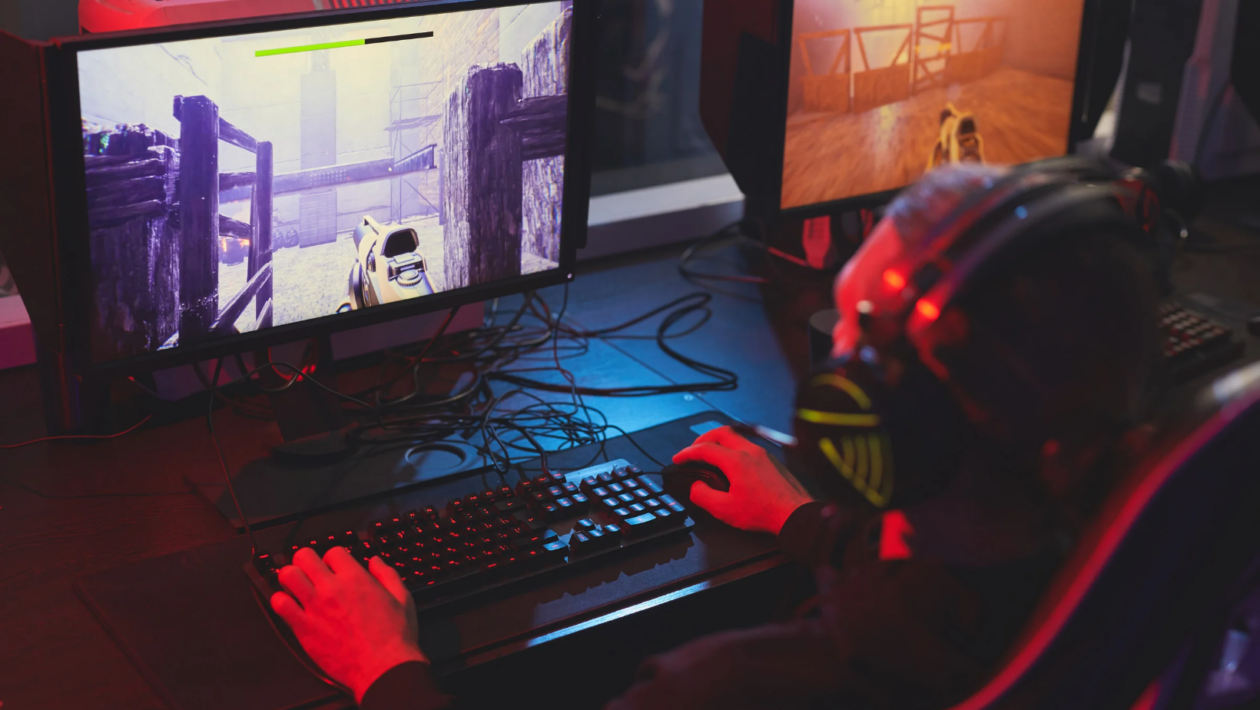Even before the advent of NFTs, paying “real” money for in-game items was controversial with gamers. And according to the latest 2023 GDC report, only 23% of developers are using paid in-game items as part of their current projects. But with valuable revenue available for studios that provide desirable in-game assets, let’s take a closer look at how developers can get this business model right.
In 2006, to much fanfare (and ridicule) US$2 horse armor was introduced as paid downloadable content (DLC) to The Elder Scrolls 4: Oblivion. Though initially met with skepticism, this was the beginning of a fundamental shift in the games industry and its business models, opening the floodgates for in-game assets and downloadable content.
This has since become a staple of some of the biggest gaming titles. For example, for free games like League of Legends and Fortnite, most of their revenue is made through microtransactions, and the global online microtransaction market is currently estimated to be worth approximately US$67.28 billion.
In 2012, Blizzard launched its smash hit title Diablo 3 alongside a “real money” auction house, which allowed players to trade, bid for and buy items other players had looted in the game. It was not well received and was eventually replaced, with the real money auction touted by many as the reason the game “failed.”
In 2022, Blizzard again faced criticism for the mobile version of Diablo – Diablo Immortal, which launched as a free-to-play title but encouraged players to spend money to upgrade their in-game hero, with some reporting it could cost US$300,000 or more to fully upgrade their character.
This criticism was often leveled at the idea that paying for downloadable upgrades and extras defeated the object of the game. But what if, instead of merely paying for extras to get ahead, downloadable content was the basis of an in-game marketplace that added to, rather than distracted from, the complex worlds that players occupy in such games? Often these assets die with the games they were purchased or won in. This means users can put hundreds of hours of time into building assets up within a game, or spend real money to get ahead with bonus resources and items, only to have them lost or digitally forgotten when it’s time for a new game or a sequel, or if the gaming studio shuts down with all the in-game assets stored on centralized servers.
Rather than accepting this as an inconvenience, we are now seeing technology evolve to give players complete ownership of their in-game assets. By using new innovations like blockchain, developers and studios can facilitate true gamer ownership of in-game items. For example, say a player had won or purchased a weapon skin. This skin could be sold as an NFT, or non-fungible token, on the blockchain. NFTs are a type of blockchain token that is not interchangeable with another — making them ideal for in-game assets as the rightful owner can irrefutably prove ownership. This means that if there is a breach or a hack, or even if the gaming platform decides to try and take that weapon skin away, they will be unsuccessful.
With NFTs representing in-game assets, the possibilities and usability of an asset increase significantly, as the asset no longer lives or dies with the game it was bought in. With this solid proof of ownership, gamers could actually take assets off the gaming platform for the first time. This means that not only could the asset be used in another game, but it could also be listed on NFT marketplaces to trade or sell, opening up a potential revenue stream for studios and gamers alike. However, the latest GDC report shows that few studios understand blockchain well enough to benefit from the promise it offers. Only 2% of respondents said that their studios are currently employing blockchain technology in their projects and the majority reported that their studios have no desire in using it, despite the potentially revolutionary use cases.
In order to preserve the microtransaction market for the gaming sector, we need to evolve along with the changing priorities of gamers. By giving gamers true ownership of their in-game items, we not only create an environment where end-users feel they have more agency but it could also open up new revenue streams for studios and developers.
Not that the company is lacking in revenue, but can you imagine if Epic, the creator of Fortnite, had embraced NFTs? It didn’t. But as well as providing its users with tangible items that could be traded, swapped or simply just used, it would have created a whole new market that could have provided it with a long-term way to make money.
Instead, Fortnite players who have invested in cosmetic upgrades will be left with dozens of old skins tied to their account, the digital equivalent of an old t-shirt being left to gather dust at the back of the closet.
Yes, there is a challenge in bringing the hugely vocal gamer market “into the fold” and educating them on how blockchain and Web3 can augment their gaming experience. While the GDC report might say that 61% of developers are opposed to using blockchain technology in games, a more optimistic view comes from companies that listen to their players’ needs. For example, Sorare, a blockchain fantasy sports game based in Paris, recently announced a four-year licensing agreement with the Premier League. Players will be able to collect and trade digital cards featuring players from all 20 English top-tier teams to use in Sorare’s fantasy football game, which opens a new way to engage with their favorite football teams, powered by blockchain technology.
One could argue there will always be a sector of the target market that will reject spending any money on in-game items, but for those that do, the benefits will ultimately work in their favor and serve to complement players’ gaming experiences in a positive way.





